 Happy Birthday Harvest! Today is a significant day for me. It’s my first anniversary of being self-employed. It’s been such an incredible year of personal growth and learning and I am so very grateful for the opportunity and the ride. This adventure has shown me that following my heart and taking a leap of faith was very much the right call for me. One year ago today I planted the seed of Harvest Coaching and Learning and I tended to it with care. I’m happy (and relieved) to say that my seed took and it sprouted and it’s now seen a full turning of the seasons. Being Gutsy. When I reflect on my life, wonderful things have started for me when I’ve made a gutsy move, be it packing up and heading to Europe on a one-way ticket without a clear plan, changing career paths a couple of times, having children, going back to university to study coaching, or starting Harvest Coaching and Learning, amongst others. Generally, when I’ve stopped to question the rules surrounding my life (be they self-imposed or external rules) and really reflected on whether or not they still serve me, I’ve made decisions that have opened up a new and positive chapter of my life. Most decisions made on this basis have been surrounded by very mixed emotions: excitement, fear, liberation, elation, relief, grief at letting go of the old, anxiety, a sense of purpose, drive and meaning, self-doubt, joy and definitely gratitude. This isn’t to say I’ve left everything behind at each stage. On the contrary, like in a book, I’ve built on the learning and experiences from previous chapters and brought what’s relevant into the new chapter. The best parts? For me it’s the challenge, the stretch, the personal growth and learning, the ability to give back and support the journey of others (in the case of starting Harvest Coaching and Learning), the wonderful people I’ve met along the way and connections I’ve made, the exciting detours and opportunities, and the sheer adventure of putting myself out on a limb. Oh, and of course celebrating my successes. The challenging parts? Questioning if it will all work or if I’ll fail (even though I really sincerely believe that there is no failure, just learning), being impatient for it to all happen yesterday, and remembering to enjoy the journey rather than being too focused on the end result. So what does the next year hold? Well, I’ll have to wait and see. I’m certainly looking forward to working with more wonderful clients, both in a coaching capacity and in workshops, and I’m looking forward to continuing the growth of Harvest Coaching and Learning. Your Journey What journey have your started or are you about to start? Are you about to head into a life transition, or is your transition already in progress? If you would like some support along the way, I would love to help. Give me a call on 0413 776 564. We can have a chat about where you would like to go, or clarify what this looks like if you’re not too sure. We can then look at how you can get started along that path. I wish you a wonderful ride! Warmest wishes, Laurenne Di Salvo Leadership & Professional Development Coach | Corporate Trainer | Learning & Development Consultant 0413 776 564
0 Comments
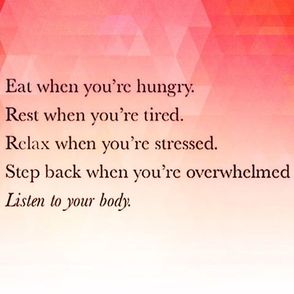 So a lot of what I talk to my clients about is the idea that we should be working towards wellness, rather than away from illness. And yet, this past few weeks, I have to admit that I haven’t done too well in this space myself. As a life and wellness coach, my hypocrisy meter has been going off a little. I’ve been thinking of Russ Harris’ quote a lot, where he says: I don’t want you to think I’ve got my life completely in order. It’s more as if you’re climbing your mountain over there and I’m climbing my mountain over here. It’s not as if I’ve reached the top and I’m having a rest. It’s just that from where I am on my mountain, I can see obstacles on your mountain that you can’t see. So I can point those out to you, and maybe show you some alternative routes around them.’ I’ve had to coach myself to gain some perspective on my own mountain. I’ve been very tired recently. It turns out this is because my iron levels have dropped really low. Anyone who has experienced low iron levels will no doubt understand this. What this has meant is that I’ve had to practice a greater level of self-care than usual and I’ve had to practice self-compassion. This has meant addressing my self-talk and not beating myself up about not setting a brilliant example, or about not being able to be superwoman (not that I have any illusions of grandeur here!). I have practiced some of the stress management strategies I talk about, with ‘avoid’ being one I’ve used a bit, saying ‘no, not this week’ to a few non-essentials. Please don’t get me wrong, it’s definitely not as bad as all that (far from!) and quite easily managed. However, it has highlighted to me once again how critical self-care is, how critical it is to fit your own oxygen mask first, and how important it is to work towards wellness, NOT away from illness. I’ve also learned just how many women have experienced low iron levels at some stage in their lives. What’s lovely is that by showing my vulnerability, others have felt comfortable to do the same and we’ve had some great conversations that have been mutually valuable, supportive and informative. In closing, I’d like to ask you a few questions:
I'm working on my own strategies as you read this! Warmest wishes, Laurenne Di Salvo Leadership & Professional Development Coach | Corporate Trainer | Learning & Development Consultant 0413 776 564 www.harvestcoaching.com.au Let's Connect Laurenne Di Salvo is a Leadership & Professional Development Coach, Corporate Trainer and Learning & Development Consultant. She enables individuals and groups to take the next step in their development through evidenced based coaching practices and learning programs 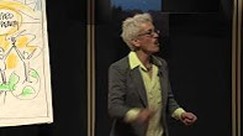 In her TED talk, Patti Dobrowolski discusses the power of drawing to help turn your desired future into reality. This is the power of visioning. Patti’s ideas are consistent with one of Stephen Covey’s Habits, that being to ‘Begin with the End in Mind’. Both talk about how it’s critical to have a clear picture, or a blue-print if you like, of what you would like your life to look like. Having a clear picture of your future state helps you to understand the gap between where you are now and where you would like to be. This works on the principle that we need to create things twice, a mental creation first and a physical creation to follow. Patti’s talk is interesting in that she discusses the way drawing can trick your brain. People are wired to consider risk and we can spend quite a bit of time rationalising all the reasons we shouldn’t change, the reasons not to strive for our desired future. We can agonise over the risks and obstacles we may encounter on the way. Patti highlights that when we draw, we use our imagination and this triggers the right side of our brain, the creative side of our brain. This can instantly help us to tap into creative solutions we may not have considered if we were to work only with our ‘rational brain’. This isn’t to say we shouldn’t consider risk, just that by visioning, we can sometimes come up with creative ways to overcome obstacles. Drawing our desired future can help us to create a more effective roadmap to take us from our current state to our desired future state. If you would like to watch Patti Dobrowolski’s TED talk ‘Draw Your Future – Take Control of Your Life,’ click here. For other visioning methods and ways to create a life you love, click here. If you would like some support, I would love to help. Please call me for a me for a confidential chat (0413 776 564). Warmest wishes, Laurenne Di Salvo Leadership & Professional Development Coach | Corporate Trainer | Learning & Development Consultant 0413 776 564 www.harvestcoaching.com.au Let's Connect Laurenne Di Salvo is a Leadership & Professional Development Coach, Corporate Trainer and Learning & Development Consultant. She enables individuals and groups to take the next step in their development through evidenced based coaching practices and learning programs.  Think about some major transitions in your life. You know, transitioning from school to work, getting married or moving in with a partner, having children, changing jobs, getting made redundant, moving country or city, retiring from the workforce, that sort of thing. Did it ever feel like you’d hit the end of one episode of your life, but you didn’t yet know what was going to happen in the next episode? You had the ‘next episode preview’, but that was it. What I mean is, you had some sketchy ideas of what was going to come next, but you could only see it in snippets. You weren’t able to see the whole next episode yet. Also, the clues you did get weren’t necessarily in context and so your ‘next episode’ may not have turned out exactly as you thought it would. How comfortable did you find this? Did you enjoy the anticipation? Were you impatient to know how it would all turn out? Did you want someone to tell you it would all be ok? Did you enjoy the journey? Did you feel all of these things at various times? Life transitions can be tricky simply by virtue of the fact that we just don’t know how the next chapter will turn out. However, there are things we can do to help ourselves through the transition:
Warmest wishes, Laurenne Di Salvo Leadership & Professional Development Coach | Corporate Trainer | Learning & Development Consultant 0413 776 564 www.harvestcoaching.com.au Let's Connect Laurenne Di Salvo is a Leadership & Professional Development Coach, Corporate Trainer and Learning & Development Consultant. She enables individuals and groups to take the next step in their development through evidenced based coaching practices and learning programs. 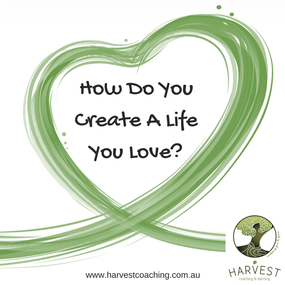 So how do you create a life you love? The truth is, the answer is different for everyone. There is no one size fits all, as we all have different versions of our ideal life. Having said this, there are a number of things you can do to help you create your version of a life you love. 1. Know what a life you love looks like It’s hard to create something if you don’t know what you're trying to create. Stephen Covey says to ‘start with the end in mind’. Start by knowing what is it you want to create. This makes it much easier to put plans in place. This is great in theory, but what if the ‘end’ is a little fuzzy, a little out of focus? To help gain clarity, I like methods that help you focus on what you want to move towards, rather than what you want to move away from. A couple of suggestions include:
2. Understand your version of success As we know (but sometimes forget), success is so much broader than career and financial success. Think about what success looks like for you. Is your version of success having time to do the things you enjoy, is it about knowing you’ve contributed to something bigger than you, is it about varied life experiences, being the kind of parent you want to be, or maybe it’s simply about feeling content. Our individual version of success will usually be tied to living a life that is aligned to our values. 3. Alignment with values Our values are the elements of our lives that are personally most important to us. They are our core beliefs and they guide us on how to live our lives in a meaningful way. A few examples include family, courage, kindness, community, adventure, respect, independence, stability, etc. There are so many more! The thing is, many of us don’t give a lot of thought to what our top personal values are. As a result, we don’t consciously choose actions that are in alignment. By giving your core values some thought, you can more consciously and consistently live in a way that is aligned with your values. This is one step towards living a life you love. 4. Recognise your strengths and interests When we are working with our strengths and interests, we are more likely to feel in flow. We are more likely to move towards what lights us up (our interests), rather than away from what we don’t want. We can then create a life we love by drawing on our strengths to help us get there and to stay there. 5. Be gutsy This means different things to different people. For me, one component of being gutsy is about questioning the rules you and others apply to your life. Think about whether or not they’re still relevant. If they served you in the past but are no longer useful or helpful, then break the rules! Have the courage to question your beliefs, thoughts and ideas and modify them as required. This will lead to new actions, opportunities and help you to create a life you love. Remember that this process will involve some level of change (this could be big or small) and change often takes you out of your comfort zone. Being gutsy is also being ok with discomfort and even fear. 6. Get support You may be able to create a life you love on your own, or you may benefit from support. This may be from friends and family, or you may choose to work with a life and wellness coach. Some of the benefits a coach can provide for you are to:
All of this can help you make choices from a place of greater self-awareness and understanding, essential to creating a life you love. If you would like more information about how I could help you to create a life you love, please call me (Laurenne Di Salvo) on 0413 776 564. Here’s to an amazing future! Warmest wishes, Laurenne Di Salvo Executive, Leadership & Professional Development Coach, Facilitator and Consultant #lifeyoulove #coaching #strengths #success  Our teachers in life come in all shapes are sizes. For example, my kids are often my teachers. I know I’m biased, but I think they’re amazing little people. While both display these characteristics, one son loves passionately, thinks with such clarity, is compassionate and very patient. The other is creative and courageous and vivacious. I love them both dearly! I also love that they are willing to call me on behaviour that others wouldn’t. I think this is important. They call my behaviour, question my comments and metaphorically hold up a mirror for me. This can be a little confronting. It is also very healthy. Fortunately, sometimes what they say is also what I’ve said to them, but clearly I need to hear the message too! In fact, I’m sure they teach me as much as I teach them. Often this is about being mindful, about being present and about being grateful. Inadvertently, they enforce some of the principles behind Positive Psychology! Let me give you a few examples: One son wanted to buy Christmas presents for a couple of his friends. He used his pocket money and bought what I believed to be ‘expensive plastic crap’. I clearly mentioned this a few too many times, because he said to me, ‘Mum, can you not wreck this for me?’ He stopped me in my tracks. Instead of appreciating that he’d put a lot of thought into what his friends would love, and being excited for him that he would enjoy the look on his friends’ faces when he gave them what he knew they would love, I was focused on how I objectively valued the gifts. I immediately said, ‘Yes, I can let you enjoy this. I’ll stop.’ In one sentence, he’d reminded me that it’s the value we place on something that matters. Whether I thought there was value in the actual item or not, there was certainly value in the joy he was getting in giving the gifts and the joy he was getting out of thinking about his friends. Once I saw this, I got a lot of joy out of his joy. Sometimes the boys will ask why I’m shouting and sometimes I’ll have a very good answer. Other times the answer will be that I’m grumpy or tired or frustrated with something or someone other than them. I love that they ask this question as it brings me into the present moment where I can mindfully think about what I’m actually upset about, be it with them, or something completely different. Sometimes I have trouble with being present. My son’s have called me on this and as a result, I am more present with them. And it’s not always a matter of being ‘called on something’. Sometimes it’s just noticing. Noticing how much more the boys talk to me when we go for a walk and I listen intently, without thinking about all the other things I need to do. Sometimes it’s watching how they interact with each other, or how they speak to someone who needs some help, or it’s how intently they listen to someone more knowledgeable (especially about soccer!). Sometimes it’s about noticing how grateful I am that my youngest will still hold my hand in public and how both boys genuinely really want to spend time with me. So while I have no intention of beating myself up about not being perfect (who is?), I am very grateful to have two little teachers under my roof! Personally I love that we have the opportunity to continually learn throughout our lives and I think it’s important to always be open to this. So I’ll leave you with a question to ponder. Who are the teachers in your life and what do they teach you? Have a wonderful day. Warmest wishes, Laurenne 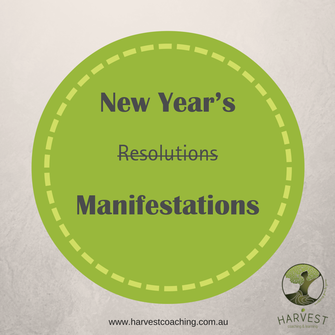 New Year’s Resolutions don’t set us up for success. They are all about ‘gonna do’, ‘wanna do’, ‘should do’, ‘if I get around to it’. It’s hard to succeed with this mindset! New Year’s Resolutions allow too much scope to give up, to keep putting things off and to make excuses. They are also usually vague. I’m going to lose weight. I’m going to get fit. I’m going to stop smoking. I’m going to have better work-life balance. Sound familiar? It’s very difficult to manifest what you want if you don’t have clarity around what the change really looks like. So what’s the alternative? No doubt there are many. One approach that I really like is New Year’s Manifestations. Why are they different I hear you ask? The power of manifestations is that they not only require you to really visualise what you want in your life, but they are phrased in the present. This is powerful! Writing about your life as if the change already exists allows you to be more mentally and emotionally committed. The change isn't something you will do one day, something you are ‘gonna do’. Mentally, you are already doing it. This also tends to keep things realistic. If you are thinking this sounds a lot like goal setting, that’s because manifestations are effectively the outputs of your goals. Getting Started I’d like to share with you a very simple approach that I’ve used for the past 5+ years. When I look back on my manifestations at the end of the year, without fail I have achieved at least 80% of them. This was never true for me with New Year’s Resolutions. The Process: 1. At the end of the old year (in this case 2015), think about where you are in your life, where you would like to be, what you would like to be doing and what you would like to have in your life by the end of the following year (2016). 2. Try to visualise what your life will look like by the end of the year. You may even like to do this with pictures, drawings or photos, or a combination of images and words. 3. Once you feel clear on what you want, write this down as a number of statements written:
who nurture and support me. There are opportunities for professional development and ongoing learning.
Your thoughts are very powerful, so use them to your advantage! Remember too that another way we sometimes block our success is that we assume we have to bring about change all on our own. Many of us aren’t great at asking for help. However, I would suggest that seeking support is actually a strength and a sign of courage and commitment. You may need support to get clarity on what it is you want to manifest, or it might be to work out what’s holding you back, be this unhealthy habits, self-limiting beliefs, your mindset or thought patterns. You may also want someone to help keep you on track, to help you clarify and work to your strengths and values, to motivate you, encourage you to take action and to hold you accountable. If this is you, you may want to consider life coaching. To find out more, call Laurenne on 0413 776 564 for a confidential chat or to make an appointment and set yourself up for success in 2016! Has anyone been to Sky Trail on Phillip Island? For those who haven’t, it’s a high ropes course that consists of horizontally strung cables, ropes, boards and other materials secured between 10 metre high steel poles. Not for those who are scared of heights! Even with a safety harness on, the top level still feels pretty high up.
So my family and I went last weekend. It was really interesting to see our different approaches. My 10 year old son, who has no fear, went straight to the top level. I was the last one to get my harness on, so by the time I started climbing the stairs, my husband and younger son (8 years old) had already followed my 10 y.o. to the top. Once there, my husband and 8 y.o. watched for a bit and then went back down to the lower level. I thought I’d better stay with my 10 y.o. After all, I’m the parent and surely I should ensure he’s ok. However, it was a lot higher up than it seemed from the ground! I managed one of the easier obstacles, but my heart was beating pretty fast at this stage. My 10 y.o. was already on fire, nearly running across the planks, so I figured given he met the height criteria to stay on his own and was wearing a safety harness, I could probably leave him there alone. For me, a better approach was to move back down a level and build my confidence first (this was my younger son and husband’s approach too). I wasn’t going to let it beat me though! So that’s what I did. I started on the easier obstacles and as I got more comfortable and confident, I tried the harder ones and had a rush of pride in myself with each one I managed. Please note I’ve had issues with one ear that left me with some balance issues for a while. Thanks to the ability of the brain to rewire, my balance seems to be in very good working order again and Sky Trail really highlighted that for me. Anyway, once I mastered the lower level I decided to go back up to the top level. I had a go at the easier obstacles. Success! I was also aware of making some assumptions. One of the planks across from one platform to the other that had no rope handles looked like it would be very wobbly when I walked on it. However, when I asked the guy who worked there what it was like, he told me it was easier than the single, foot-width plank I had just crossed. Turns out he was right, and so I tried a lot more of the obstacles I'd initially thought were difficult. By the end, I’d even completed the single rope course that you crossed holding short, varying level strands of rope to hold you steady (not sure if you can picture this, but maybe visit Sky Trail and you’ll know the one I mean). By this stage, my 10 y.o. had completed every single obstacle more than once and was heading down. My husband, who isn’t a fan of heights was done and my 8 y.o. had completed a lot more obstacles than I thought he would. I was really proud of him. Sky Trail taught me a number of lessons. 1. Break down your goals Firstly, you don’t have to achieve your overriding goal in the first attempt. It can work much better to start with bite sized goals. Achieving smaller successes helps build your confidence and allows you to more comfortably bite off larger chunks. 2. Learn from others’ experience If someone has done what you’re attempting before you, ask them about their experience. You don’t have to take on their advice, but it’s helpful to learn from them and to assimilate their ideas and suggestions. They may challenge your assumptions and this is often a good thing. 3. Don’t give up! If you feel you’ve climbed a bit high earlier than you were ready for, there’s no shame in moving back a step or two in order to allow you to move forward with confidence when you’re ready. 4. Remember there’s always more than one way to enjoy an experience We all tackled Sky Trail at our own level of comfort and confidence and we all enjoyed the experience. Don’t compare your experience and success to that of others. If you’ve overcome an obstacle that challenged you, be proud of that. 5. Safety first Make sure you’ve got your safety harness on. There is always support and it’s sensible to use it when you need to. There were many obstacles we could have crossed without the harness and we would have been fine, but it was good know there was a bit of support there if we needed it. So, choose your obstacle and work your way across. It feels fantastic when you reach the next platform! Have a wonderful day. The end of the year brings many things. It brings fun, socailising, family and friends, celebrations, endings and new beginnings. It also brings with it many expectations and with this, many find the Silly Season quite challenging.
It doesn’t matter if you’re religious or not, the end of one year and the beginning of the next often invites reflection. What have I achieved this year? Did I live up to my own expectations? What will I do differently next year? What do I even want from the new year? Expectations around being social can challenge people too. Some people love an end of year party, a bbq, an opportunity to get together with others in a less formal environment. Others find this challenging and know putting themselves out there socially will take a bit of energy, physical and emotional. And then there are those who have one foot in both camps, they enjoy being social, but the number of social events can leave them drained and craving time alone. Then there’s the family gatherings. Whilst for the majority, spending time with family brings joy, closeness and connection, we all know there’s no one better than our families to trigger us. We may find we fall into family roles that perhaps aren’t the ones we want to continue to play. All of this points to the importance of practicing self-care. If you need to say ‘No’ to some social occasions, that’s ok. Say ‘No’. If you want to get out there and have fun, do that, but make sure you have time to sleep, to have days where you eat well and that you can just be. If you benefit from exercise, find a way to fit this in. Maybe enjoy a walking catch up, instead of meeting for coffee or lunch. Try and be aware of your triggers so that you can be less reactive. Viktor Frankl tells us that there is space between stimulus and response. It’s in this space that we can choose how we respond. While much easier said than done, if we can tap into this, Frankl tells us this is our opportunity for growth and freedom. So, take a breath and allow yourself the space to choose how you respond to triggers at a time of year that will trigger many. If you do find the silly season difficult, seek support. You don’t have to go it alone and do remember, you won’t be alone in finding this time of year challenging. Many do! If you’re wondering what you want for the new year, think about the goal behind the goal. That is, not just what you want, but why you want it? What will it do for you? How will it benefit you? What will it allow you to let go of? Understanding the goal behind the goal allows you to tap into deeper motivations that may allow you to more easily realise your New Year’s Resolutions. But that’s a whole other Blog post, so stay tuned. If you would like some support to start 2016 on track, call Laurenne on 0413 776 564 for a confidential chat about where you’re at now and where you’d like to be. She can support you to implement the plans, actions and mindset necessary to set you up for a year of personal growth, sustainable life change and enhanced wellbeing. Enjoy the last weeks of 2016 and take the space you need to breathe! Have a wonderful day. It’s hard to wait for what you want, especially when you’re working hard to ‘make it happen’. Anyone who knows me will tell you that I’m not a super patient person. I can get a bit action oriented. Recently I’m being challenged around patience and I’m trying to rise to the challenge, to look it in the eye and say, ‘I’ve got this’, or at least ‘I can go with this even if it’s not my favourite space.’ I’m trying to trust. Trust myself, trust the universe, just trust.
There are a few things I’m doing to try help myself. I’m reminding myself to enjoy the moment. I’m doing some of things I’ve wanted to do for a long time and I haven’t had time to do and I’m clearing out the old and preparing space for the new. Energetically, I’m letting the universe know that I’m ready. I've set my intentions, I've done the groundwork and I'll keep working towards my goals. I'll also keep reminding myself that one of my actions is to be ok with inaction. This is actually not just ok, but is in fact really important. After you plant seeds, they need time to grow undisturbed! What do you do when you feel impatient? |
AuthorLaurenne Di Salvo Archives
March 2024

|
Contact+61 413 776 564
Harvest Coaching & Learning Pty Ltd operates both nationally and globally and is based in Melbourne, Australia. |
ConnectPlease leave us a Google Review
|
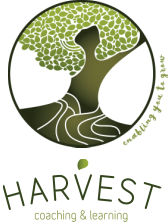
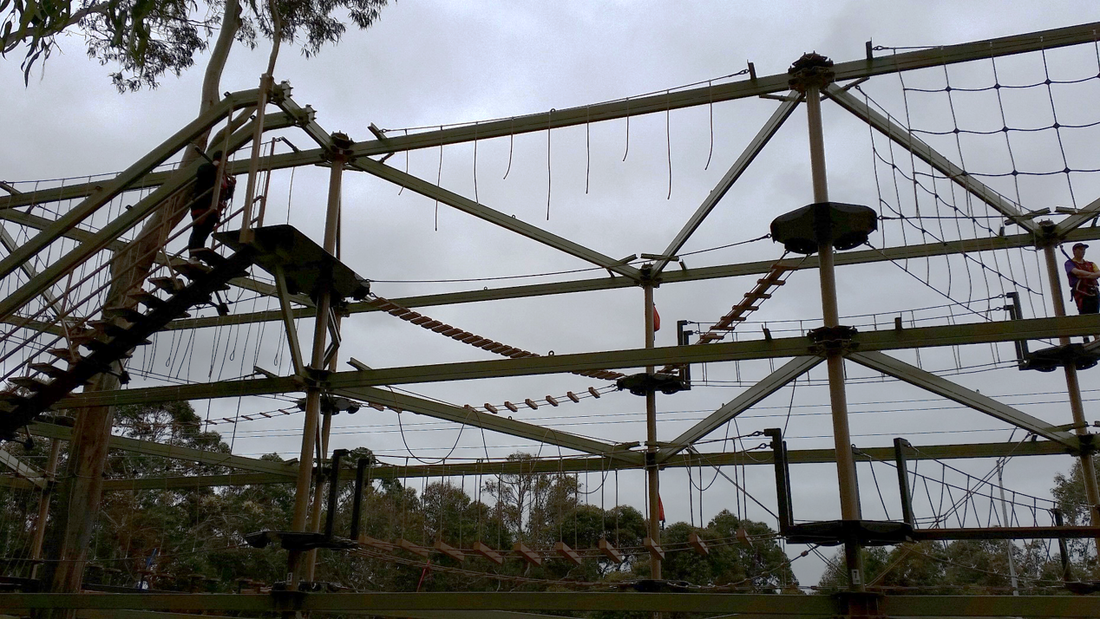




 RSS Feed
RSS Feed
